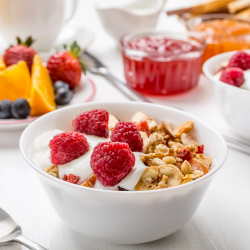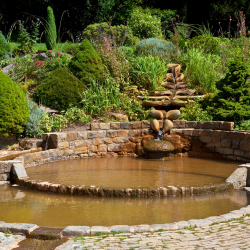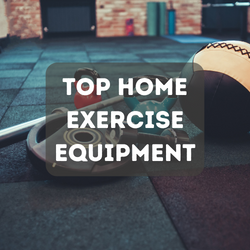Gardening in small spaces has become a popular trend among urban dwellers and those with limited outdoor areas. It offers a creative and sustainable way to grow your own plants, herbs, and even vegetables, regardless of the size of your living space. This guide focuses on both indoor and outdoor gardening techniques, tailored for those who wish to make the most out of their small spaces. Whether you have a tiny balcony, a small yard, or just indoor space, there are innovative gardening methods that can help you grow a thriving garden.
The Appeal of Small Space Gardening

Small space gardening is not just about growing plants; it’s about the efficient use of space, creativity, and making a personal green space that brings joy and nature closer to home. It’s ideal for city living, where outdoor space is often scarce, but the desire to connect with nature is strong. This form of gardening allows individuals to cultivate a variety of plants, from decorative flowers to essential herbs and nutritious vegetables, without the need for a traditional garden plot.
Benefits of Gardening in Small Spaces
Gardening in small areas comes with its own set of advantages. It encourages a more intimate connection with each plant, allowing for detailed attention and care. It can also transform a small or unused area into a lush, vibrant space that enhances your living area’s aesthetics and air quality. Additionally, it promotes a sustainable lifestyle by encouraging local food production and reducing the carbon footprint associated with food transportation.
This will introduce you to ten innovative gardening techniques that are perfect for small spaces. Each method is designed to help you maximize your gardening potential, whether you’re working with a few indoor pots or a small outdoor balcony. Let’s embark on this green journey together, turning small spaces into abundant gardens full of life and beauty.
1. Vertical Gardening: Maximizing Limited Spaces
Vertical gardening is a technique that allows gardeners to grow plants upwards instead of outwards, making it an ideal solution for small spaces. This method not only saves valuable floor space but also adds a unique aesthetic element to both indoor and outdoor areas. By utilizing vertical structures, you can significantly increase your plant-growing capacity without needing more ground space. From lush green walls to simple hanging planters, vertical gardening opens up a world of possibilities for those with limited gardening space.
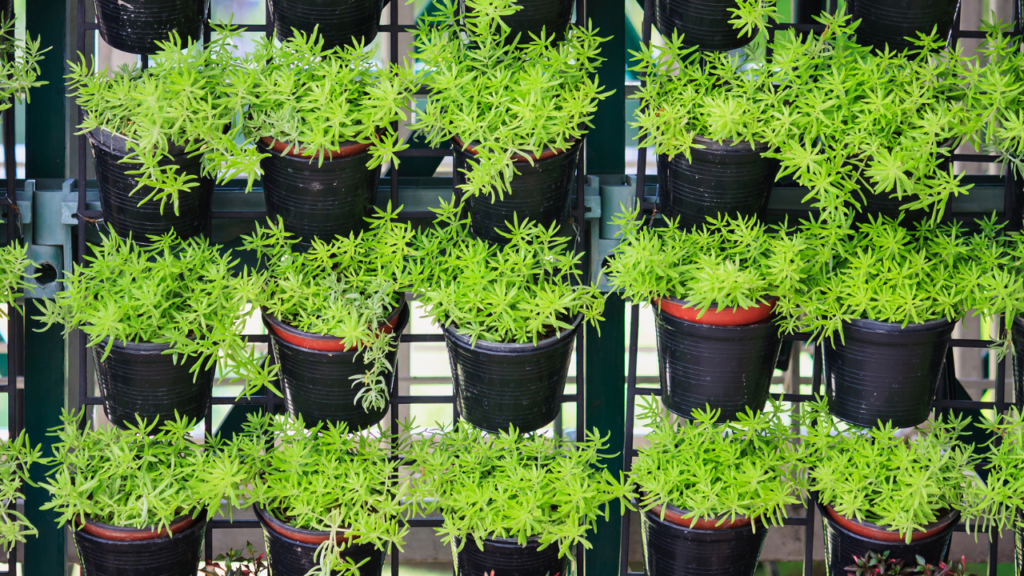
Utilizing Wall-Mounted Planters
Wall-mounted planters provide a straightforward way to introduce vertical gardening into your space. These planters can be fixed to any wall, allowing you to transform bare surfaces into vibrant displays of greenery. They are perfect for growing a variety of plants, including herbs, flowers, and small vegetables.
- Benefits:
- Space-saving: Maximizes unused vertical areas.
- Decorative: Enhances wall aesthetics with living plants.
- Accessible: Makes gardening easier with plants at eye level.
Exploring Hanging Baskets
Hanging baskets are another excellent option for vertical gardening. Suspended from ceilings or beams, these baskets can be filled with a mix of plants to create cascading floral or green displays. They are especially suitable for trailing plants, which can grow downwards, adding depth and dimension to your gardening space.
- Advantages:
- Versatility: Can be hung indoors or outdoors.
- Aesthetic appeal: Adds a dynamic element to garden design.
- Mobility: Easily moved to optimize plant growth conditions.
Vertical gardening transforms the concept of gardening in small spaces, turning limitations into opportunities. By adopting vertical gardening techniques, you can enjoy the full benefits of a garden, no matter the size of your area. It’s a creative and effective way to enhance your living space with greenery, bringing beauty and nature closer to your everyday life.
2. Container Gardening: Flexibility and Variety
Container gardening offers a versatile and adaptable approach to gardening in small spaces. This method involves growing plants in containers instead of planting them in the ground. It’s an ideal solution for those who may not have access to a traditional garden plot, such as apartment dwellers or those with limited outdoor space. Containers can range from pots and planters to more creative options like repurposed items. This gardening style allows for a wide variety of plants to be grown, including herbs, vegetables, flowers, and even small trees.

Choosing the Right Containers
Selecting the appropriate container is crucial for the success of your plants. Containers come in various materials, including plastic, clay, ceramic, and even fabric. Each type has its advantages and considerations regarding weight, porosity, and aesthetics.
- Plastic pots are lightweight and cost-effective but may deteriorate under sunlight over time.
- Clay and ceramic pots offer better breathability for roots but are heavier and more fragile.
- Fabric pots promote excellent drainage and air circulation, enhancing root health.
Optimizing Container Placement
The placement of your containers can significantly impact plant growth. Containers offer the flexibility to move your plants to the best possible location for sunlight exposure, which is vital for photosynthesis and healthy growth.
- Sunlight needs: Place sun-loving plants in areas where they can receive at least 6-8 hours of sunlight daily. Shade-tolerant plants can be placed in less sunny spots.
- Protection from elements: Move containers to sheltered locations during extreme weather conditions like strong winds or hail.
Container gardening not only maximizes limited space but also introduces an element of mobility and customization into gardening. It allows gardeners to experiment with different plant combinations and easily change the look of their garden space. With the right container and placement, you can create a vibrant and productive garden in any small space.
3. Hydroponic Systems: Soilless Gardening Inside
Hydroponic systems represent a modern gardening technique that allows for soilless cultivation of plants. This innovative method uses nutrient-rich water solutions to grow plants, offering an efficient and space-saving solution for indoor gardening. Hydroponics is particularly appealing for those with limited space because it does not require traditional soil beds, making it perfect for indoor environments. Whether you’re looking to grow herbs, vegetables, or ornamental plants, hydroponic systems can provide higher yields and faster growth rates compared to conventional gardening methods.

Understanding the Basics of Hydroponics
At its core, hydroponics involves growing plants in a water-based, nutrient-rich solution, without soil. The roots of the plants are supported using an inert medium such as perlite, vermiculite, or rock wool. This method allows plants to receive a balanced supply of nutrients directly to their roots in a more efficient manner than soil-based gardening.
- Benefits:
- Efficient nutrient uptake, leading to faster growth and higher yields.
- Reduced water usage, as the system recycles water.
- Elimination of soil-borne pests and diseases.
Selecting the Right Hydroponic System
There are several types of hydroponic systems available, each with its unique mechanism for supporting plant growth. Choosing the right system depends on your space, budget, and the type of plants you wish to grow.
- Deep Water Culture (DWC): Ideal for beginners, this system suspends plant roots in a nutrient solution, providing constant access to water, nutrients, and oxygen.
- Nutrient Film Technique (NFT): Involves a continuous flow of nutrient solution over the roots, suitable for growing smaller, leafy plants.
- Ebb and Flow (Flood and Drain): Temporarily floods the grow area with nutrient solution at intervals, allowing for greater oxygenation of the roots.
Hydroponic gardening offers a soil-free alternative to traditional gardening, making it an excellent option for indoor gardeners looking to maximize their small spaces. With the ability to control nutrients, water, and light, hydroponics can lead to healthier plants and more abundant harvests. Whether you’re a seasoned gardener or new to the world of hydroponics, this soilless method opens up endless possibilities for growing fresh produce and plants indoors, all year round.
4. Utilizing Window Sills and Balconies
Window sills and balconies are often underutilized spaces in homes that can be transformed into vibrant mini-gardens. These areas can offer just the right amount of sunlight and air circulation needed for a variety of plants to flourish. Whether you’re looking to grow a selection of herbs, some colorful flowers, or even small vegetables, these spaces can provide an excellent environment for gardening in small or restricted areas. This focuses on how to make the most of these spaces to create a green oasis that not only looks beautiful but is also productive.
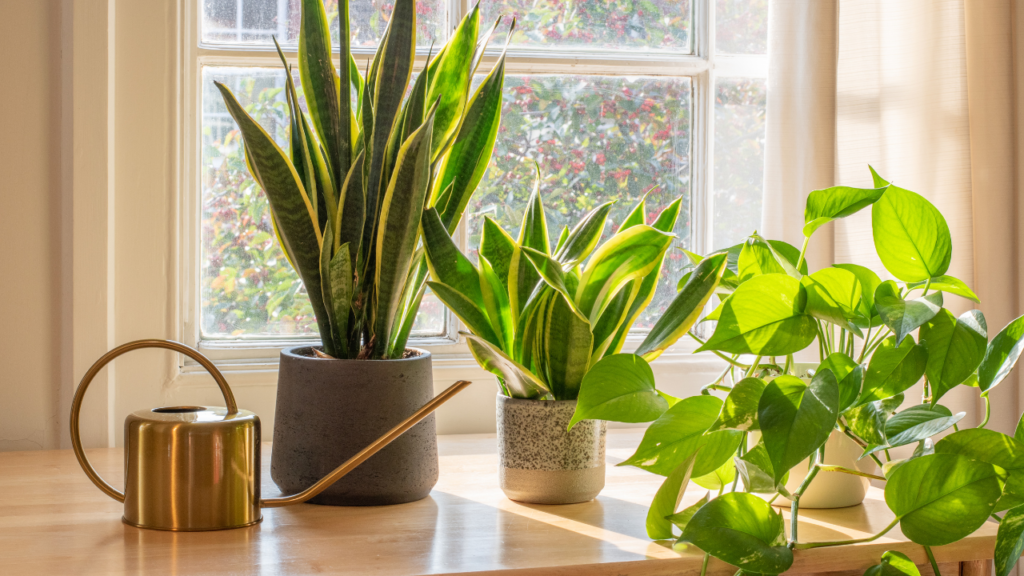
Making the Most of Window Sills
Window sills are perfect for smaller plants that thrive in ample sunlight. They can be used to grow a range of indoor plants, herbs, and even some vegetables that do not require deep soil to grow.
- Ideal Plants for Window Sills:
- Herbs: Basil, cilantro, chives, and mint.
- Flowers: African violets, succulents, and small cacti.
- Vegetables: Microgreens and small root vegetables like radishes.
Creating a mini garden on your window sill not only enhances the aesthetics of your space but also brings the joy of gardening indoors. It’s important to consider the direction your window faces to match plants with their sunlight needs and to ensure pots have proper drainage to prevent waterlogged soil.
Transforming Balconies into Garden Spaces
Balconies offer a bit more space and flexibility compared to window sills and can accommodate a wider variety of plants. By using containers, hanging pots, and vertical gardening techniques, you can maximize the use of vertical space and grow a lush balcony garden.
- Tips for Balcony Gardening:
- Use railing planters and hanging baskets to save floor space and add height to your garden.
- Select plants based on sunlight exposure. Balconies facing south receive the most sun, while north-facing balconies are better suited for shade-tolerant plants.
- Incorporate a mix of perennials and annuals to ensure year-round greenery and blooms.
Balconies and window sills are fantastic spaces for gardening within small or confined areas, allowing you to bring nature into your home. With the right selection of plants and some creative arrangement, these spaces can transform into a thriving garden that offers both beauty and bounty.
5. Companion Planting for Small Gardens
Companion planting is a traditional gardening practice that involves planting different crops in proximity to one another to enhance growth, deter pests, and improve overall yield. This method is particularly beneficial for small gardens, where space optimization is crucial. By carefully selecting plant combinations, gardeners can create a symbiotic relationship between plants, maximizing the use of limited space while promoting healthy growth and pest control.

Understanding the Benefits of Companion Planting
Companion planting offers several advantages for small gardens. By strategically pairing compatible plants, gardeners can:
- Maximize Space: Companion planting allows for efficient use of limited garden space by growing plants that complement each other’s growth habits.
- Natural Pest Control: Certain plant combinations can repel pests or attract beneficial insects, reducing the need for chemical pesticides.
- Enhanced Nutrient Uptake: Some plants can improve soil fertility or fix nitrogen, benefiting neighboring plants by enhancing nutrient availability.
- Increased Crop Yield: Companion planting can lead to higher yields by promoting pollination, improving soil structure, and reducing competition for resources.
Pairing Compatible Plant Combinations
When selecting companion plants for a small garden, it’s essential to consider factors such as growth habits, nutrient needs, and pest resistance. Here are some popular companion plant combinations:
- Tomatoes and Basil: Basil repels pests that commonly affect tomatoes while enhancing their flavor.
- Marigolds and Vegetables: Marigolds deter nematodes and other soil-borne pests, making them an excellent companion for a variety of vegetables.
- Corn, Beans, and Squash: Known as the “Three Sisters,” this Native American planting technique involves growing corn, beans, and squash together. Corn provides support for beans, beans fix nitrogen for corn and squash, and squash acts as a living mulch, suppressing weeds and conserving soil moisture.
- Lettuce and Radishes: Radishes act as a natural pest repellent for lettuce while the shallow-rooted lettuce helps suppress weeds around the radishes.
By incorporating companion planting techniques into small gardens, gardeners can create harmonious and productive growing environments. With thoughtful planning and experimentation, companion planting can transform a modest garden space into a thriving ecosystem of mutually beneficial plant relationships.
6. Selecting Dwarf and Miniature Plant Varieties
When space is limited, choosing dwarf and miniature plant varieties is a smart strategy to maximize your gardening potential. These pint-sized plants are specifically bred to thrive in small spaces, making them ideal for containers, raised beds, and compact garden plots. Selecting the right dwarf and miniature plants ensures that you can enjoy a diverse and productive garden, even in the smallest of spaces.

Benefits of Dwarf and Miniature Plants
Dwarf and miniature plant varieties offer several advantages for small-space gardening:
- Compact Size: These plants have smaller mature sizes, allowing you to grow more in less space.
- Faster Maturity: Many dwarf and miniature varieties reach maturity quicker than their standard counterparts, enabling multiple harvests in a single growing season.
- Versatility: Suitable for both indoor and outdoor gardening, dwarf and miniature plants can thrive in containers, hanging baskets, and small garden plots.
- Low Maintenance: These plants often require less maintenance, such as pruning and staking, making them ideal for busy gardeners or beginners.
Popular Dwarf and Miniature Plant Varieties
When selecting dwarf and miniature plants for your small garden, consider factors such as sunlight requirements, water needs, and space constraints. Here are some popular options to consider:
- Dwarf Tomatoes: Compact tomato varieties, such as ‘Patio’ or ‘Tiny Tim,’ are perfect for small gardens and containers, producing abundant fruit on compact plants.
- Miniature Peppers: Mini bell peppers and chili peppers, like ‘Lunchbox Orange’ or ‘Miniature Chocolate Bell,’ offer a burst of flavor in small packages, making them ideal for container gardening.
- Compact Herbs: Dwarf varieties of herbs like basil, thyme, and rosemary are excellent choices for windowsill gardens or small herb pots, providing fresh flavors for culinary creations.
- Miniature Lettuces: Tiny lettuce varieties, such as ‘Tom Thumb’ or ‘Little Gem,’ are perfect for small garden plots or containers, offering crisp, flavorful leaves for salads and sandwiches.
By incorporating dwarf and miniature plant varieties into your small garden, you can enjoy a bountiful harvest of fresh produce and ornamental plants, even in the tightest of spaces. With careful selection and cultivation, these compact plants can transform your small garden into a thriving oasis of greenery and beauty.
7. DIY Vertical Pallet Gardens
Creating a vertical pallet garden is a fantastic way to add greenery to your small space while upcycling materials. Pallets provide a sturdy and versatile structure for growing plants vertically, making them perfect for balconies, patios, or even indoor spaces. We’ll explore how to design and construct your own vertical pallet garden, transforming a simple pallet into a thriving vertical oasis.

Designing Your Vertical Pallet Garden
Before you begin constructing your vertical pallet garden, it’s essential to plan out your design. Consider factors such as sunlight exposure, plant selection, and overall aesthetics. Here are some tips for designing your vertical pallet garden:
- Evaluate Sunlight: Determine the amount of sunlight your pallet garden will receive to select appropriate plants. Place sun-loving plants on the top tiers and shade-tolerant plants on the lower tiers.
- Select Plants: Choose plants that are well-suited for vertical gardening, such as herbs, succulents, trailing vines, and small flowers. Consider the mature size of the plants and their growth habits.
- Arrange Plants: Sketch out a design for how you want to arrange your plants on the pallet. Consider spacing between plants and allow room for growth.
Constructing Your Vertical Pallet Garden
Once you have a design in mind, it’s time to construct your vertical pallet garden. Here’s a step-by-step guide to creating your own:
- Prepare the Pallet: Sand down the pallet to remove any rough edges and splinters. If desired, stain or paint the pallet to match your aesthetic preferences.
- Add Landscape Fabric: Attach landscape fabric or weed barrier to the back and bottom of the pallet using staples or nails. This will help hold the soil in place and prevent it from falling out.
- Fill with Soil: Fill each cavity of the pallet with potting soil, pressing it firmly into place. Leave enough space for the roots of your plants to spread out.
- Plant Your Garden: Insert your chosen plants into the openings of the pallet, starting from the bottom and working your way up. Be gentle with the roots and ensure they are well-covered with soil.
- Water and Maintain: Water your vertical pallet garden thoroughly after planting, and continue to water regularly to keep the soil moist. Monitor your plants for signs of growth and adjust watering as needed.
Tips for Success
- Choose a Sturdy Pallet: Select a pallet that is in good condition and sturdy enough to support the weight of the soil and plants.
- Consider Drainage: Ensure proper drainage by drilling drainage holes in the bottom of each cavity of the pallet.
- Regular Maintenance: Regularly check your vertical pallet garden for water and nutrient needs, as well as any pests or diseases.
By following these steps, you can create your own vertical pallet garden to bring beauty and greenery to your small space. Whether you’re a seasoned gardener or new to vertical gardening, a DIY pallet garden is a fun and creative project that yields beautiful results.
8. Incorporating Edible Plants into Ornamental Displays
Combining edible plants with ornamental displays is a clever way to add beauty and functionality to your garden space. By integrating edible plants seamlessly into your landscaping, you can create visually stunning displays that also provide fresh, homegrown produce. We’ll explore how to incorporate edible plants into ornamental arrangements, adding both aesthetic appeal and practicality to your outdoor space.

Creating Beautiful and Productive Gardens
Incorporating edible plants into ornamental displays allows you to enjoy the best of both worlds – visually appealing landscapes and delicious homegrown food. Here are some ideas for combining edible and ornamental plants in your garden:
- Mixed Planters: Plant a variety of herbs, vegetables, and flowers together in containers or raised beds to create vibrant and diverse displays. Consider combining trailing herbs like thyme or oregano with colorful annual flowers for a dynamic arrangement.
- Edible Borders: Use edible plants to define garden borders or pathways. Plant low-growing herbs like lavender or rosemary along walkways, or edge flower beds with edible greens like lettuce or kale for a practical and decorative touch.
- Vertical Gardens: Create vertical gardens using trellises, arbors, or living walls to grow climbing vegetables like cucumbers or beans alongside flowering vines such as morning glories or sweet peas. This vertical integration maximizes space while adding visual interest to vertical surfaces.
- Fruit Trees as Focal Points: Plant fruit trees like dwarf citrus or espaliered apple trees as focal points in your garden. Not only do fruit trees provide beautiful blossoms and foliage, but they also yield delicious fruits for harvest.
- Pollinator Gardens: Design gardens that attract pollinators like bees and butterflies by incorporating a mix of flowering herbs, perennials, and fruit-bearing plants. Pollinator-friendly gardens not only support local ecosystems but also increase the productivity of edible crops through enhanced pollination.
Tips for Success
- Selecting Complementary Plants: Choose edible and ornamental plants that thrive in similar growing conditions and complement each other in terms of color, texture, and growth habit.
- Maintaining Balance: Strike a balance between edible and ornamental plants to ensure that your garden remains visually appealing while providing ample harvests of homegrown produce.
- Regular Maintenance: Stay on top of garden maintenance tasks such as watering, fertilizing, and pruning to keep your garden healthy and thriving throughout the growing season.
Incorporating edible plants into ornamental displays allows you to create beautiful, productive gardens that provide both aesthetic enjoyment and practical benefits. By thoughtfully combining edible and ornamental plants, you can design landscapes that not only look stunning but also serve as abundant sources of fresh, nutritious food.
9. Smart Gardening: Leveraging Technology
In today’s digital age, technology has revolutionized the way we garden, offering innovative tools and solutions to make gardening more efficient, productive, and enjoyable. Smart gardening involves leveraging technology to monitor and manage various aspects of your garden, from watering and fertilizing to pest control and plant care. We’ll explore the ways in which technology can enhance your gardening experience and help you achieve greater success in your garden.

Benefits of Smart Gardening
Smart gardening offers numerous benefits for both novice and experienced gardeners alike. By harnessing the power of technology, you can:
- Save Time and Effort: Automated systems and smart devices streamline gardening tasks, reducing the time and effort required for maintenance.
- Optimize Resource Use: Smart sensors and controllers monitor soil moisture levels, weather conditions, and plant health, allowing for more precise watering and fertilizing.
- Improve Plant Health: Real-time monitoring and alerts enable early detection of pests, diseases, and environmental stressors, allowing for timely intervention and treatment.
- Increase Yield and Quality: By providing optimal growing conditions and timely care, smart gardening techniques can result in higher yields and better-quality produce.
Tools and Technologies for Smart Gardening
There are a variety of tools and technologies available to assist you in smart gardening. Here are some popular options:
- Smart Irrigation Systems: Automated irrigation systems equipped with soil moisture sensors and weather forecasts adjust watering schedules based on real-time conditions, ensuring plants receive the right amount of water at the right time.
- Smart Plant Sensors: Wireless plant sensors monitor soil moisture, light levels, temperature, and nutrient levels, providing valuable data to help you optimize growing conditions and detect potential issues early.
- Garden Management Apps: Smartphone apps offer garden planning tools, plant databases, and personalized recommendations for planting schedules, fertilizing regimens, and pest control strategies.
- Connected Garden Devices: Smart devices such as Wi-Fi-enabled planters, LED grow lights, and automated garden cameras allow for remote monitoring and control of your garden from anywhere.
Tips for Getting Started
- Assess Your Needs: Identify which aspects of your garden could benefit from smart technology, such as irrigation, monitoring, or pest control.
- Research Options: Explore the available tools and technologies to find those that best suit your garden’s size, layout, and specific requirements.
- Start Small: Begin with a few key smart gardening tools or devices and gradually expand your system as you become more familiar with their capabilities and benefits.
By embracing smart gardening techniques and leveraging technology, you can cultivate a more efficient, productive, and sustainable garden. Whether you’re a beginner looking to simplify garden maintenance or an experienced gardener seeking to optimize plant health and yield, incorporating smart technologies into your gardening practices can help you achieve your goals with greater ease and success.
10. Seasonal Rotation and Succession Planting
Seasonal rotation and succession planting are essential techniques for maximizing yields and maintaining soil health in your garden throughout the year. By strategically planning which crops to plant and when to plant them, you can optimize growing conditions for each plant and ensure a continuous harvest. We’ll delve into the importance of seasonal rotation and succession planting and provide tips for implementing these practices in your garden.

The Importance of Seasonal Rotation
Seasonal rotation involves planting different crops in the same area of your garden each season, typically following a specific sequence or pattern. This practice helps prevent soil depletion, nutrient imbalances, and pest and disease buildup, resulting in healthier plants and improved yields. Seasonal rotation also allows you to take advantage of each crop’s unique nutrient needs and growth habits, promoting overall garden diversity and resilience.
- Crop Families: Rotate crops within the same family to minimize pest and disease carryover. For example, avoid planting tomatoes, peppers, or eggplants in the same area year after year to prevent soil-borne diseases like verticillium wilt or fusarium wilt.
- Soil Health: Rotating crops helps maintain soil structure, fertility, and microbial diversity by varying nutrient demands and root systems. For instance, legumes like peas or beans fix nitrogen in the soil, benefiting subsequent crops with higher nitrogen availability.
Implementing Succession Planting
Succession planting involves staggering plantings of the same crop or different crops to ensure a continuous harvest throughout the growing season. By planting new crops as soon as previous ones are harvested, you can make the most efficient use of available space and extend your harvest window. Succession planting is particularly useful for fast-maturing crops like lettuce, radishes, and spinach, as well as for crops with multiple harvests, such as beans or cucumbers.
- Continuous Harvest: Plan successive plantings of quick-maturing crops at regular intervals to ensure a steady supply of fresh produce throughout the season. For example, sow a new row of lettuce seeds every two weeks to maintain a continuous harvest of salad greens.
- Crop Rotation and Succession: Combine seasonal rotation with succession planting by following one crop with another that complements or benefits from the previous one. For instance, plant nitrogen-fixing legumes like peas or beans after heavy-feeding crops like corn or tomatoes to replenish soil fertility.
Tips for Success
- Plan Ahead: Develop a garden plan or calendar that outlines which crops to plant and when to plant them based on your local climate, frost dates, and growing season.
- Monitor Soil Health: Regularly test soil pH and nutrient levels to ensure proper fertility and adjust planting strategies accordingly.
- Keep Records: Keep track of planting dates, crop varieties, and yields to evaluate the success of your seasonal rotation and succession planting efforts and make adjustments for future seasons.
By incorporating seasonal rotation and succession planting into your gardening practices, you can optimize yields, maintain soil health, and enjoy a continuous harvest of fresh produce throughout the growing season. With careful planning and thoughtful implementation, these techniques can help you make the most of your garden space and resources while promoting sustainability and resilience in your garden ecosystem.
Conclusion
In conclusion, gardening in small spaces offers numerous opportunities for creativity and innovation. By implementing techniques such as vertical gardening, container gardening, and incorporating edible plants into ornamental displays, gardeners can maximize their space and enjoy the benefits of homegrown produce and lush greenery. Cultivating patience, persistence, and a willingness to experiment are key to success in small-space gardening, as setbacks are inevitable but provide valuable learning experiences. Additionally, connecting with the gardening community allows gardeners to share knowledge, seek advice, and find inspiration. Overall, small-space gardening is a rewarding journey that fosters creativity, community, and a deeper connection to nature.




